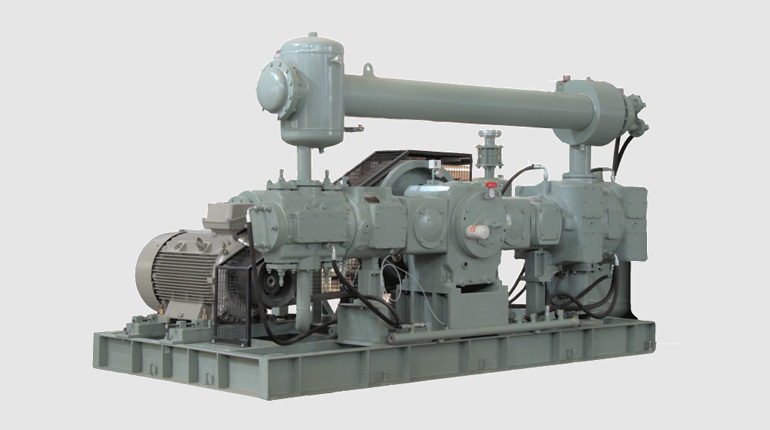
For Co2 Gas Compressor, Bio Gas Compressor, Nitrogen Gas Compressor, Please Send Enquiry
A gas compressor is a mechanical device used to increase the pressure of a gas by reducing its volume. It functions based on the principles of thermodynamics, where energy is applied to the gas to compress it into a smaller volume, raising its pressure. Gas compressors are widely used in various industries, including oil and gas, refrigeration, HVAC systems, manufacturing, and transportation of gases.
Reciprocating Compressors: Use pistons to compress gas in a cylinder. These are ideal for high-pressure applications and are often found in industries such as natural gas processing.
Rotary Compressors: Use rotating components like screws, vanes, or lobes to compress gas.
Centrifugal Compressors: Use high-speed rotating impellers to accelerate the gas, converting kinetic energy into pressure. These are commonly used for large-volume, low-pressure applications, such as in the petrochemical industry.
Axial Compressors: Similar to centrifugal, but gas flows parallel to the axis of rotation. They are used in high-flow applications like jet engines and power plants.
Compressor Housing: Contains and protects the internal parts.
Rotors or Pistons: These are responsible for the movement and compression of gas.
Inlet and Outlet Valves: Control the entry and exit of gas.
Cooling System: Maintains the temperature of the gas as compression generates heat.
Lubrication System: Reduces friction and wear of moving parts.
Oil & Gas Industry: Compressors are used to transport natural gas through pipelines.
Refrigeration and Air Conditioning: Compressors help in cooling by compressing refrigerant gases.
Manufacturing: Used in industrial processes where high-pressure air or gases are required.
Power Plants: In turbines and engines for combustion air.
